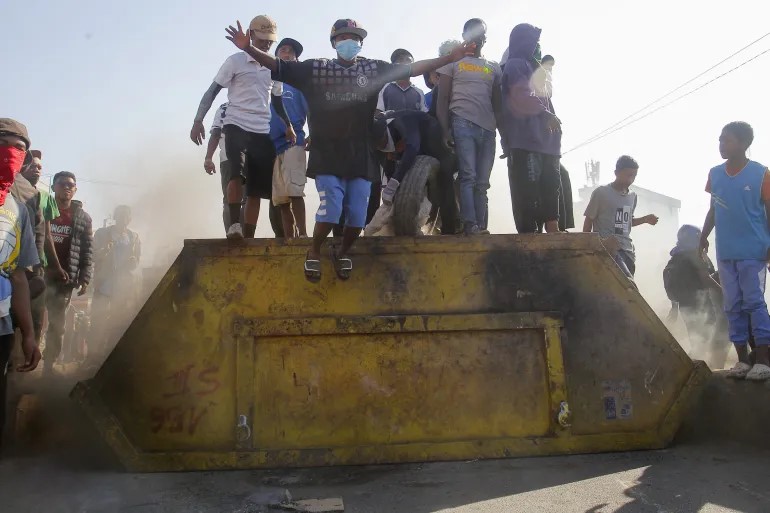
Police use tear gas and rubber bullets to disperse Madagascar protesters

 :
| Updated On: 10-Oct-2025 @ 12:34 pm
:
| Updated On: 10-Oct-2025 @ 12:34 pmSHARE
At least 1,000 anti-government protesters took to the streets of Madagascar’s capital, Antananarivo, demanding the resignation of President Andry Rajoelina amid rising political unrest. The protests, now entering their third week, mark the most serious wave of demonstrations in the Indian Ocean island nation in recent years.
Organised by a group called “Gen Z Madagascar”, which identifies itself as a “peaceful civic movement,” the demonstrations initially erupted over widespread public frustration with frequent water and power shortages. However, they have since evolved into broader protests against alleged corruption, nepotism, and government mismanagement under Rajoelina’s leadership. The growing discontent reflects deep-seated anger among citizens over deteriorating living conditions, lack of transparency, and perceived authoritarian tendencies within the government.
On Thursday, thousands of protesters gathered once again in Antananarivo after organisers called for a general strike. They rejected Rajoelina’s recent efforts to defuse tensions, insisting that he step down immediately. The situation escalated when police used tear gas, stun grenades, and rubber bullets to disperse the crowds. Some protesters retaliated by throwing stones at security forces. Reports from AFP indicated that at least four people were injured by rubber bullets and two others by projectiles from stun grenades.
The violence also affected nearby institutions. Tear gas fired near a maternity ward forced medical staff to relocate premature babies to the back of the building for safety, highlighting the severe risks posed to civilians. The use of force against demonstrators and the impact on medical facilities drew condemnation from local rights groups and increased international concern about the government’s handling of dissent.
The ongoing protests began on September 25 and have already triggered significant political consequences. In an apparent attempt to show accountability and regain control, President Rajoelina, aged 51, dismissed his entire cabinet, signaling internal turmoil within his administration. However, rather than calming the unrest, the move was seen by many as a superficial gesture. Earlier in the week, Rajoelina appointed Ruphin Fortunat Zafisambo, a military general, as the new Prime Minister, further fueling speculation that the president is tightening his grip on power through the support of the armed forces.
Despite the escalating demonstrations and widespread public anger, Rajoelina has refused to resign. He accused those calling for his departure of attempting to “destroy our country.” Protest leaders have rejected his invitation for dialogue, saying that discussions would be meaningless unless he steps down first. This political standoff has deepened divisions between the government and civil society, with no clear resolution in sight.
Andry Rajoelina’s political career has been marked by turbulence. He first rose to power in 2009 through a military-backed coup, ousting then-President Marc Ravalomanana. After stepping down in 2014 under international pressure, Rajoelina made a political comeback and was elected president in 2018. His second term, however, has been marred by allegations of authoritarianism, corruption, and growing discontent over the declining economy.
The current wave of unrest underscores a broader crisis of governance in Madagascar. It reflects citizens’ frustrations with systemic inequality, economic hardship, and perceived government arrogance. As protests continue to gain momentum, the situation poses a significant challenge to Rajoelina’s leadership and threatens to plunge the island nation into deeper political instability.